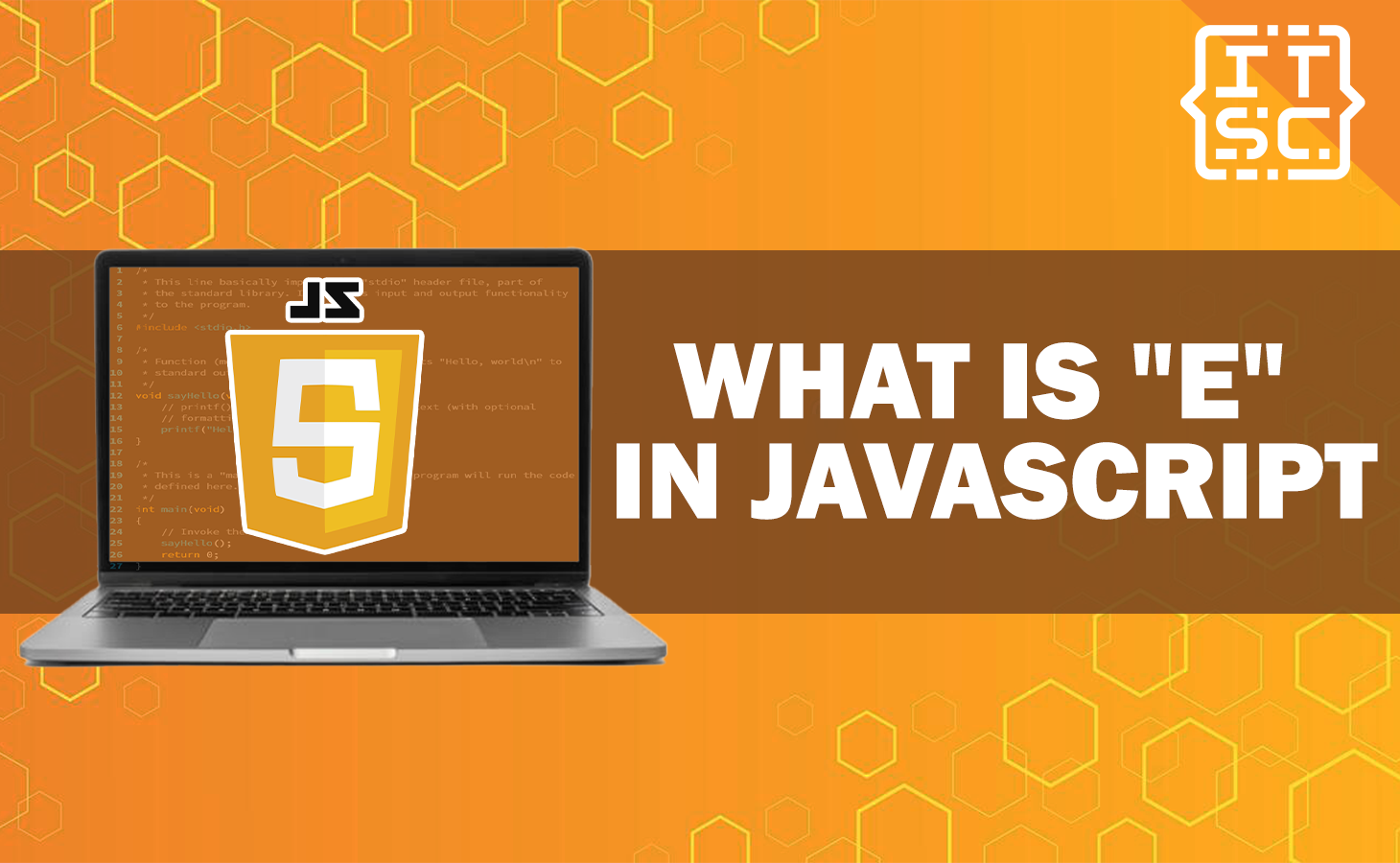You don’t understand what is the meaning of “e” parameter inside a JavaScript function? Keep on reading!
This article will acquire a thorough understanding of this vital component of parameter “e” and grasp its significance in crafting proficient and impactful code.
Let’s start to discover the secrets behind the parameter “e” in JavaScript.
What is “e” in JavaScript functions?
The parameter “e” is automatically passed to your function when you add an event listener in JavaScript.
It represents the element that was affected by the event.
One of the best examples is the button that was clicked.
In JavaScript functions, the letter “e” is commonly used as a shortcut for the word “event.” It serves as a representation of the event object that is passed to event handlers.
This event object contains essential information about the event that was triggered, such as the type of event, the specific element it occurred on, and any additional data associated with it.
For instance, when working with a click event handler, the variable “e” symbolizes the click event object.
This object holds valuable details about the click event, like the element that was clicked and the position of the mouse cursor at the time of the click.
By accessing the properties and methods of the event object, you can write code that dynamically responds to user interactions, adding an interactive touch to your web pages.
Why is the “e” parameter important in JavaScript functions?
In JavaScript functions, the “e” parameter is vital for event handling.
When an event occurs, like a mouse click or key press, JavaScript can trigger a function to respond to it.
By using the “e” parameter, developers can access important event details and take actions accordingly.
The “e” parameter is important in JavaScript functions because it provides a way for the function to access information about the event that triggered it, allowing it to respond to user interactions in a dynamic and interactive way.
Common event types in JavaScript
Here are some of the common event types in JavaScript:
📌Click
Activated upon clicking an element.
📌Mouseover
Activated upon the mouse pointer entering an element.
📌Submit
Triggered when a form is submitted.
📌Keydown
Activated upon pressing a key on the keyboard.
Example code using the parameter “e” in JavaScript
You’ll see in the following code how the parameter “e” is automatically passed to your function when you add an event listener in JavaScript.
<!DOCTYPE html>
<html>
<head>
<title>Example</title>
</head>
<body>
<button id="myButton">Click me!</button>
<script>
const myButton = document.querySelector('#myButton');
myButton.addEventListener('click', function(e) {
console.log('The button was clicked!');
console.log('Event type:', e.type);
console.log('Target element:', e.target);
});
</script>
</body>
</html>
In this example, we have created a sample HTML document with a <button> element and a <script> tag containing the JavaScript code.
The JavaScript code selects the button element using its ID and assigns it to the myButton variable.
It then uses the addEventListener method to attach a click event listener to the button.
When the button is clicked, the click event listener function is called and passed the click event object as its first argument, represented by the “e” parameter.
Inside the function, we can access properties of the event object, such as its type and target properties, to determine how to respond to the click.
In this case, we simply log some information about the click event to the console.
Console output:
The button was clicked!
Event type:
click
Target element:
<button id="Button"></button>Conclusion
In conclusion, this article provides a thorough understanding what is the “e” parameter in JavaScript functions and its significance in event handling.
The “e” parameter is automatically passed to a function when an event listener is added in JavaScript, representing the element affected by the event.
It serves as a shortcut for the event object, which contains important information about the event, such as its type, the specific element it occurred on, and additional associated data.
We are hoping that this article provides you with enough information that helps you understand what is e in JavaScript.
You can also check out the following article:
Thank you for reading itsourcecoders 😊.

